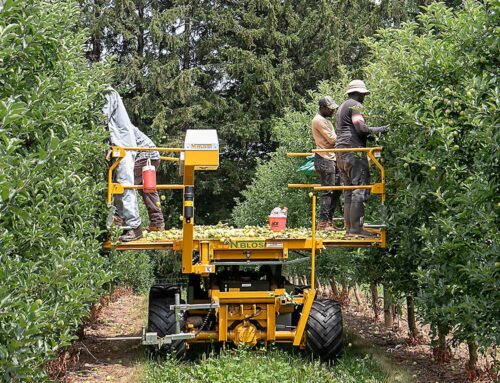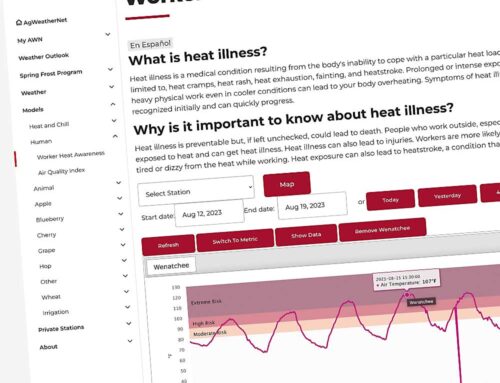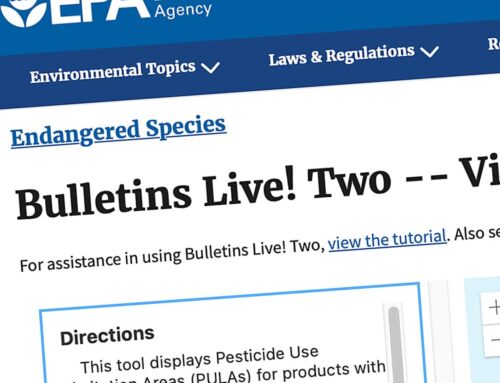More food safety regulations are going to be a tough pill to swallow for tree fruit growers, but U.S. Food and Drug Administration officials say it’s for their own good.
The FDA is charged with implementing the Food Safety Modernization Act, which the U.S. Congress passed in 2011, and is proposing standards governing how produce is grown, harvested, packed, and stored.
“In my mind, it had a dual purpose of ensuring food safety and protecting the food production system,” Mike Taylor, the FDA’s deputy commissioner for foods and veterinary medicine, said during a listening session in Yakima, Washington, this summer.
Outbreaks of illness disrupt the food system, reduce demand for implicated products, and result in a loss of consumer confidence, he said.
“We have common goals around food safety and the protection of the food supply. The last thing we want is for consumers to buy less fruits and vegetables based on any concern about safety. We want people to eat more fruits and vegetables.”
In a world where people are increasingly detached from agriculture and know less about where their food comes from, people need more assurances that their food is safe, he said. “It’s about providing the public the assurances they need, and so we need to work together to do that.”
Taylor said Congress did a good job in laying out the direction the FDA should take, but the agency has many decisions to make in terms of how to implement the law so it works across all food systems. He and a team of FDA officials travelled to the Northwest in August to visit fruit and vegetable growers in Idaho, Oregon, and Washington, and to hold listening sessions.
Risk
The tree fruit industry has been lobbying since the law was passed for the regulations to reflect the relative risk of the various types of produce it covers, pointing out that a crop grown in trees should be at less risk of contamination than a crop like spinach.
When the FDA released its proposed regulations, which amount to several hundred pages, no such distinctions were made.
The agency has been accepting comments since the regulations were issued in January and has extended the comment period through mid-November. The agency will then deliberate for about 18 months before issuing the final regulations.
“As we try to come up with rules that work for all of agriculture across the country, it’s critical that we see it firsthand,” Taylor said. “We’re dealing with an incredible diversity of agriculture across the country. The process will be hugely influenced by the people who can show us what’s happening on the ground and provide alternatives to what we’ve proposed.”
Where a proposed rule seems unworkable, and there are alternative ways to accomplish the objective, state governments can apply on behalf of producers for a variance to the rules. There’s also the option for individual growers to use alternative practices to those laid out in the rules if they can back them up with scientific data. Growers would not have to submit the data to the FDA for approval in advance, but would need to make it available upon request.
Not typical
The final requirements will be effective 60 days after they are published in the Federal Register, but growers will have two to four years to comply, depending on the size of their operation. Small growers, with annual gross sales averaging less than $25,000, are exempt. Farms grossing less than $500,000 on average and those who sell most of their produce directly to consumers are exempt from some of the rules.
“We’ve been making it very clear that it’s not a typical regulatory system where we issue a rule and go out and inspect,” Taylor said. “Instead, what we envision is a model where we collaborate with our state partners and take an approach based on outreach, guidance, and technical assistance to support the community.”
State Representative Bruce Chandler from Washington’s 15th District told the listening session that growers have been increasingly subjected to food safety inspections, audits, and certifications required by their suppliers, who appear to be using them as a marketing tool. It takes an enormous amount of time, and the producer bears the costs. He hoped the FDA rules might become a standard that would relieve growers of the repetition and redundancy of other food safety programs.
The FDA has also issued a proposed rule for preventive controls for human food, which covers facilities that process or pack produce.
The Food Safety Modernization Act covers imported produce as well as food produced in the United States. In July, the FDA issued its proposed regulations on the accountability and certification of exports, which are open for comment until November 26.
Taylor said under the law, imported food must have been produced under the same standards as domestically produced food, and it requires that every importer have a documented system for verifying that.
Deborah Carter, technical issues manager for the Northwest Horticultural Council, said that though the listening session gave people an opportunity to tell the FDA face-to-face how the regulations will affect them, it’s critical that growers submit written comments in order to affect the final rule.
For more information about the proposed regulations or to submit comments, go to www.fda.gov/Food/GuidanceRegulation/FSMA/default.htm. •







Leave A Comment